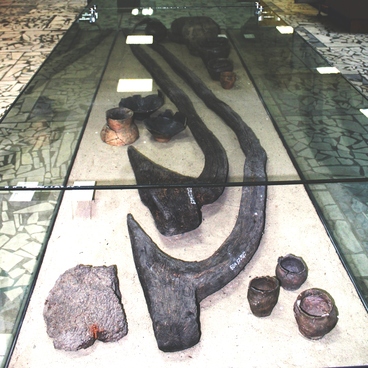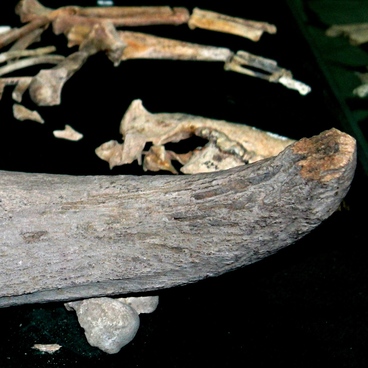The snaffle bit was a part of the bridle for riding horses. It consisted of two parts: the mouthpiece that was placed in the horse’s mouth, and the psalia that were connected to the reins and the headpiece. When the reins were pulled, the mouthpiece pressed into the horse’s lower jaw and tongue, making it obey the rider.
Snaffle bit with psalia
Dimensions
11,5x21,5 cm
11,5х21,5 cm
11,5х21,5 cm
Technique
Iron, forging, inlay-work
Collection
Exhibition
0
Open in app#1
Snaffle bit with psalia
#2
#4
In ancient times, mouthpieces were made from solid leather belts: they have not survived till now. Later, bridles started to be made with metallic details that were fastened to each other with hinges. The psalia, at those times, were made from bones or horns. The oldest psalium was found in Crimea, at the Kamenka archaeological site. The part of the bridle was dated 3rd millennium BC and looked like a bone disk with studs.
Iron and bronze psalia appeared in the 1st millennium BC and differed in shape depending on the people who made them. Scythian psalia were C- or S-shaped and often decorated with embossed heads of various animals. The Sarmatians made dumbbell-shaped psalia with bronze cones at the ends, and the Greeks made mobile details that consisted of several rings. Rich warriors’ horses could also have silver psalia.
#9
The Slavs mainly made iron snaffle-bits with vertical crescent-shaped psalia. This type of psalia was often named “lunula” due to the similarity to the amulet of the same name. Such psalia first appeared in the northern part of the Black Sea coastal area. The Torkils and the Pechenegs were the first to use them, and later, Slavonic tribes also started making psalia of this shape.
Details of the harness of a riding horse
#6
Snaffle-bits with lunula-shaped psalia were used by rich horsemen: for example, by high-ranking members of the armed forces or rich city dwellers. Sometimes, the harness was decorated with golden inserts.
By the beginning of the 2nd millennium BC, psalia gradually fell out of use. They were substituted with large metallic rings with which the snaffle-bits were fastened to the reins. The mouthpieces were replaced by one-piece cannon-bits and bridle bits consisting of several rings.
#7
The snaffle-bit stored in the Bryansk State Regional Ethnography Museum was found during archaeological excavation at an ancient site near the village of Staropochepie. That part of the harness probably belonged to a rich warrior: on the lunula-shaped iron psalia, one can see golden inlay-work representing simple geometric shapes.
#10
Bryansk State Regional Ethnography Museum
read morehide
00:00
00:00
1x
Snaffle bit with psalia
Dimensions
11,5x21,5 cm
11,5х21,5 cm
11,5х21,5 cm
Technique
Iron, forging, inlay-work
Collection
Exhibition
0
Open in app
Share


